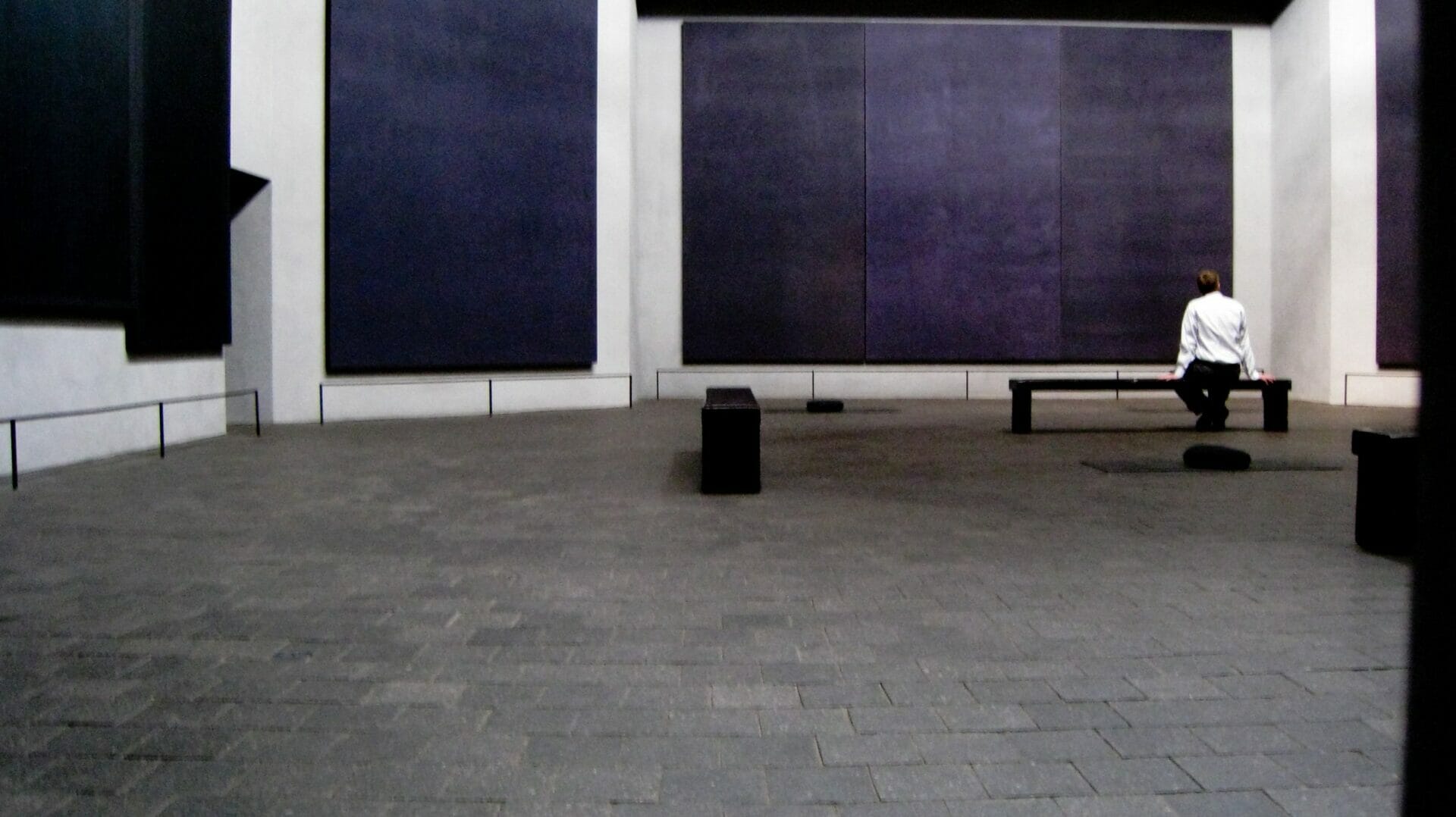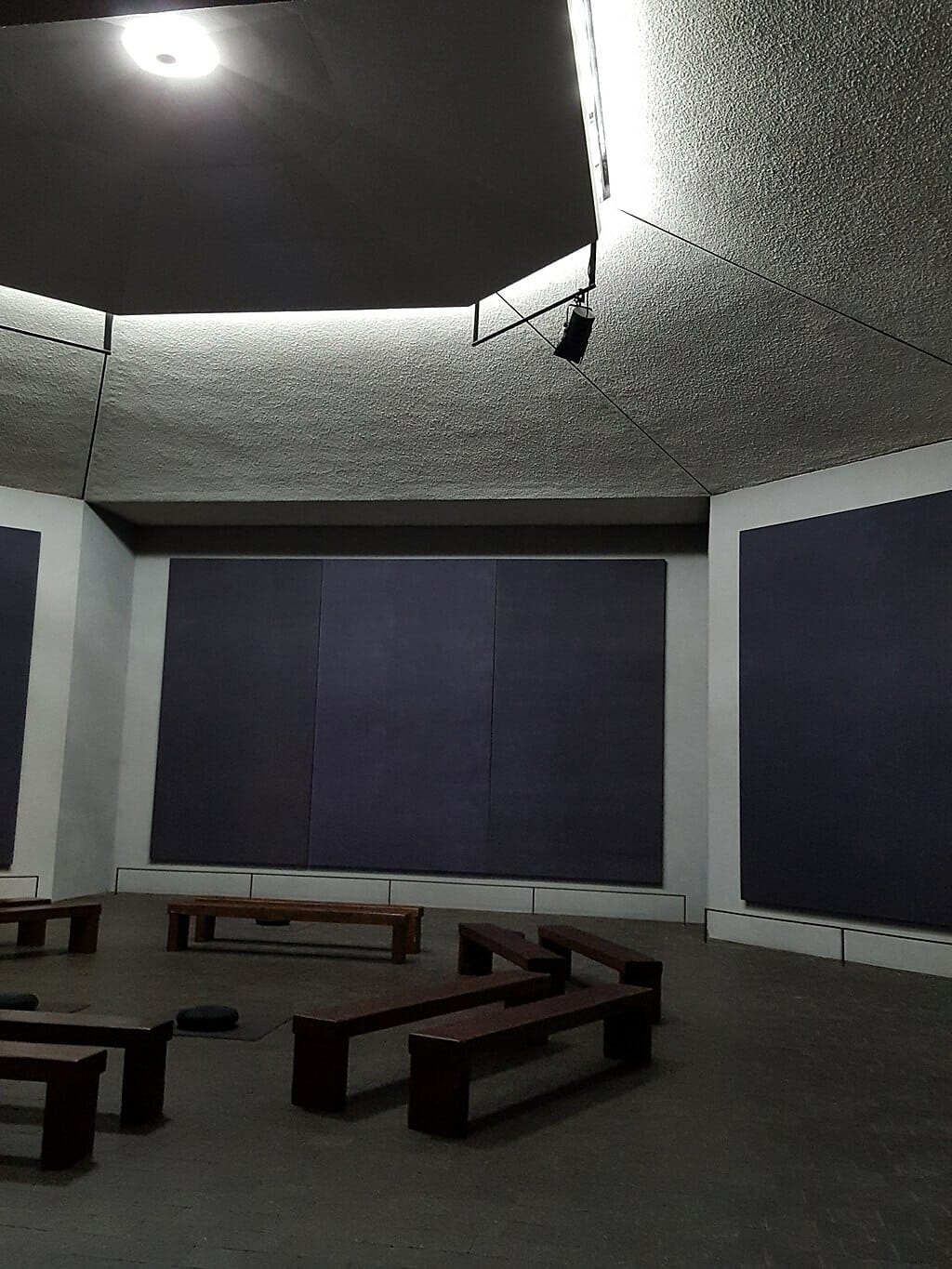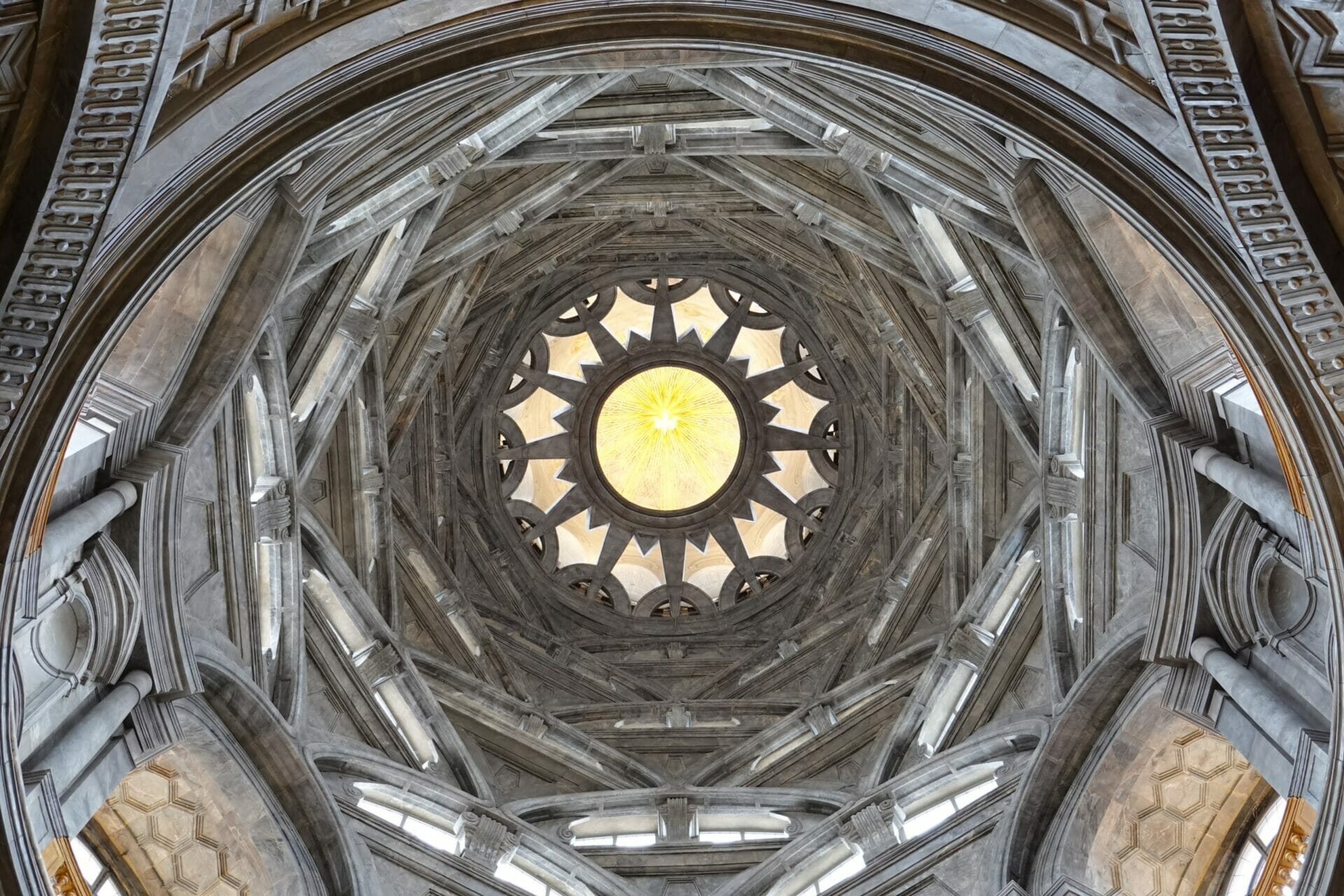
Rothko Chapel | Abstract art equals universal spirituality
Artist
Year
Country
Location of the visited exhibition
Material
In 1964, the American Abstract Expressionist Mark Rothko started painting fourteen site-specific works to be hung on the walls of the Houston Chapel, now called Rothko Chapel. The venue is an octagonal room inscribed in a Greek cross created by the architect Philip Johnson. It is an apparently simple space that speaks to the spectator of mysticism and universal spirituality and evokes transcendental emotions.
The paintings were commissioned six years before the artist’s suicide. The chapel was completed in 1971. Therefore, Rothko never saw it finished.

Image courtesy of Alan Islas via Wikimedia Commons
The importance of space and light
Mark Rothko chose special light and color for the Houston chapel. Thanks to them, the area becomes mystic and spiritual, and his paintings on the walls speak to the visitors about universal feelings. The works become space, the colors become light. Rothko created compositions that transform the whole room where they are placed.
His paintings can still today generate new installations. Rothko’s canvas are not canvas anymore, but pieces that transform everything around them. His paintings work the same way in which James Turrell‘s windows and Dan Flavin‘s lights do. They modify the surrounding ambiance, changing the light, the color, the atmosphere. They sacralize their location.
Rothko’s simplicity evokes big emotions
Rothko’s abstract art can speak of such universal and deep emotions such as spirituality, faith, mysticism, the sacred. It might seem a paradox, but it is probably the non-figurative aspect and the simplicity of it that make his message so accessible.
This links to another paradox, the one about the auction records that involved Rothko’s works in the recent past. It seems as if human beings are willing to pay huge amounts of money for something that represents God.
A religious experience that moves one to tears.
I can’t help but leave this place with tears in my eyes.
Probably the most moving experience I have had with art.
Some comments from the Rothko Chapel visitor’s book
Auction records vs. spirituality
Mark Rothko is known by many for having held an impressive auction record in 2012. His Orange, Red and Yellow went for 86.9m dollars at Christie’s, becoming the most expensive piece of contemporary art sold at public auction until that time.
In addition to the commercial value of his paintings, Rothko was one of the artists most capable of moving people’s feelings in the whole history of art. According to the American art historian and critic James Elkins (Pictures and Tears: A History of People Who Have Cried in Front of Paintings, 2004) and the psychologist of art Ellen Winner (How Art Works: A Psychological Exploration, 2018), many people have experienced feelings related to the so-called Stendhal Syndrome entering the Rothko Chapel in Texas.
Stendhal Syndrome: transient psychosomatic disorder, supposedly brought about by exposure to a large amount of art or natural beauty in a short space of time, characterized by racing pulse, dizziness and fainting (…)
Oxford Reference, Oxford University Press
Auction records and art market trends appear desecrating for many people that appreciate only the spiritual and historical aspects of the works. But it is not a question of either-or. Maybe one of the reasons why Rothko’s paintings reach impressively high auction records is their capacity to convey universal feelings such as spirituality.
The Seagram Murals and the power of abstract art
The Seagram Murals were commissioned to Rothko to decorate The Four Seasons Restaurant in the Seagram Building in New York. They are often the subject of debates on abstract art and spirituality, such as in the Houston Chapel. The artist canceled the commission at the last moment. Years later, after having spent time in storage space, the paintings were donated to the Tate Foundation. They have since been displayed both in Tate Britain and Modern.
A series of paintings that were commissioned to be placed in a restaurant, exhibited in a non-sacred place, still has the power of evoking in the spectator spirituality and transcendental feelings. This is the power of Rothko’s abstract art: it confers to the space where it is situated an atmosphere of mysticism, a sublime and spiritual sensation.
Tag
Buy a ☕ for Hypercritic










